UG Makers
Every two weeks, UG Makers puts the spotlight on a researcher who has created something tangible, ranging from homemade measuring equipment for academic research to small or larger products that can change our daily lives. That is how UG researchers contribute to the solutions for big scientific and societal challenges. For decades, engineering teaching and research at the UG has been part of a wide array of strong disciplines, and from a national point of view, our collaboration with the four technical universities is becoming more and more intensive.
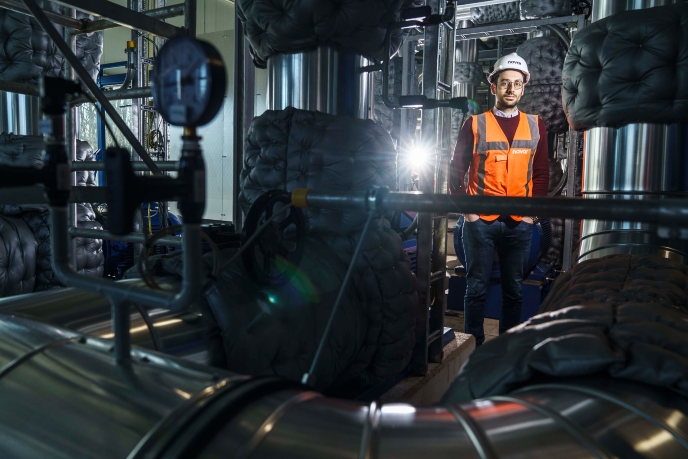
Smart energy management
Grid congestion poses a challenge to our electricity network, and expanding the infrastructure will take time and money. ‘What we can do right now, is manage and optimize what we have as best as we can,’ says Michele Cucuzzella. For example by using peaks in electricity generation to heat and store water which can then be used to heat houses in the city at a later stage. Read the rest of the article here.

Measuring how strenuous work is
How much energy does it take to lay bricks when building a wall or to walk with a prosthetic leg? There is a simple way to measure this by determining the amount of carbon dioxide a person exhales. However, being able to do this usually involves using a mask that makes breathing more difficult and talking impossible. Charissa Roossien developed a more user-friendly method. Read the rest of the article here.
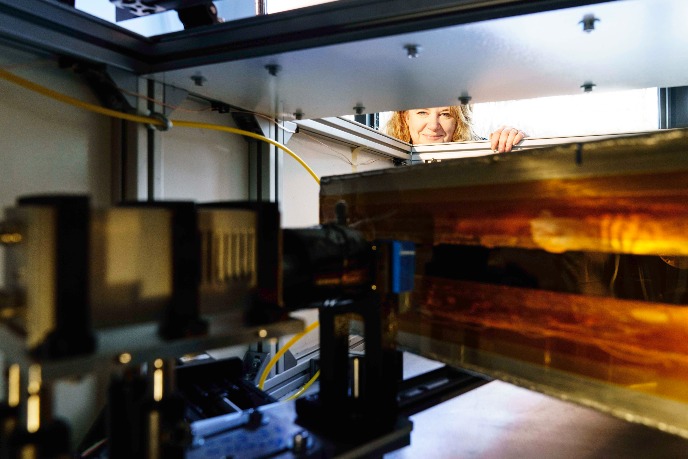
A tabletop version of a huge X-ray facility
What if your research requires a huge international facility, which is far away and has limited availability? Moniek Tromp has built a tabletop version that allows her to take a large part of the measurements on new batteries in her own lab. Read the rest of the article here.
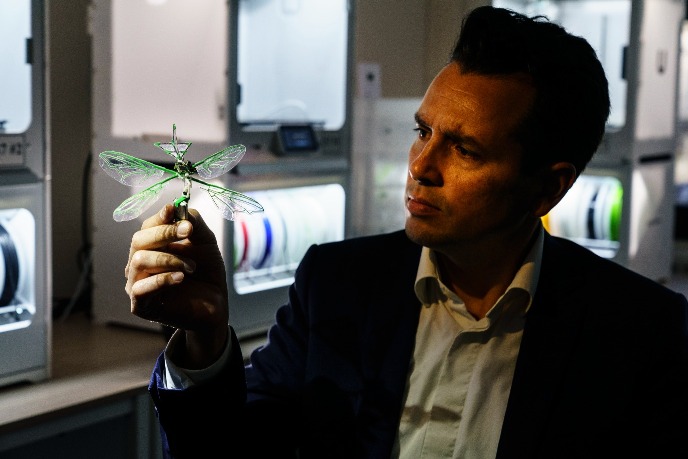
As efficient as a house fly
‘In nature, most flying animals rely on flapping movements,’ explains Mauricio Muñoz Arias, assistant professor of Automation and Control Systems. ‘I believe that ultimately flapping is a much more efficient technique than the rotational movement used in drones.’ Together with his students, Muñoz Arias developed a featherlight device that flaps its wings like an insect: an ornithopter. The device can fly a pre-programmed trajectory or it can be controlled remotely from a laptop. Read the rest of the article here.

Flexible solar panels and a tattooed sensor
The black dots and lines on this plastic plate conduct electricity, and are as flexible as the plastic it is on. And that is special, Ranjita Bose, associate professor of Polymer Engineering, explains: ‘It’s a conductive polymer that combines the flexibility of plastics with the conductivity of metals.’ Bose can apply this coating in any pattern, and even on delicate materials such as textile fibres or human skin. Read the rest of the article here.
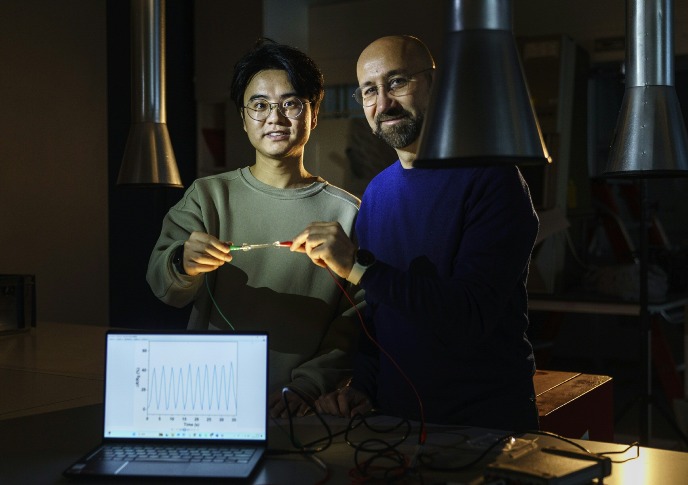
A water-resistant, self-healing sensor
It’s stretchable, adhesive, self-healing in case it breaks, water and freezetolerant, and it conducts electricity. The transparent strip shown in the photos is a so-called hydrogel, developed by PhD student Zeyu Zhang, under supervision of Patrizio Raffa, associate professor of Smart and Sustainable Polymeric Products. Because the conductivity changes when the material is stretched, it can be used as a sensor: stick it to your elbow and you can measure how far it bends, or stick it to a building in a seismic zone and you can measure vibrations. Even in the rain. Read the rest of the article here.
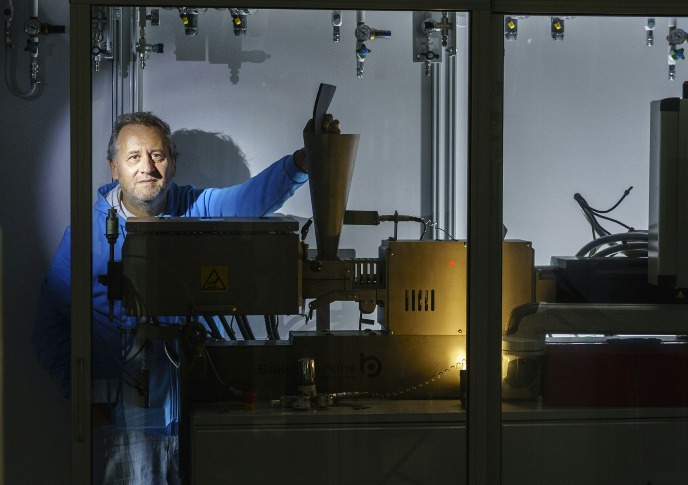
How a contrarian cracked rubber recycling
A small company in Grootegast produces bicycle baskets and slippers from recycled rubber. That is remarkable because, until recently, it was impossible to recycle rubber. However, Francesco Picchioni, Professor of Chemical Technology at the University of Groningen, and Ton Broekhuis, now Emeritus Professor, discovered how this could be done. Read the rest of the article here.
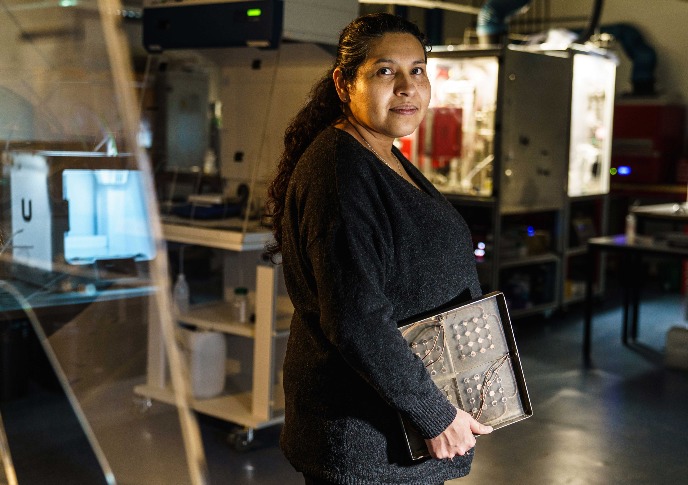
Harvesting energy from walking
A tile on the sidewalk of Zuidhorn station, in a busy spot between the train and bus station, counts the steps of people walking on the tile, and harvests energy from their movements. At the moment, however, the tile is back in the lab of developer Professor Mónica Acuautla Meneses for an upgrade. Read the rest of the article here.
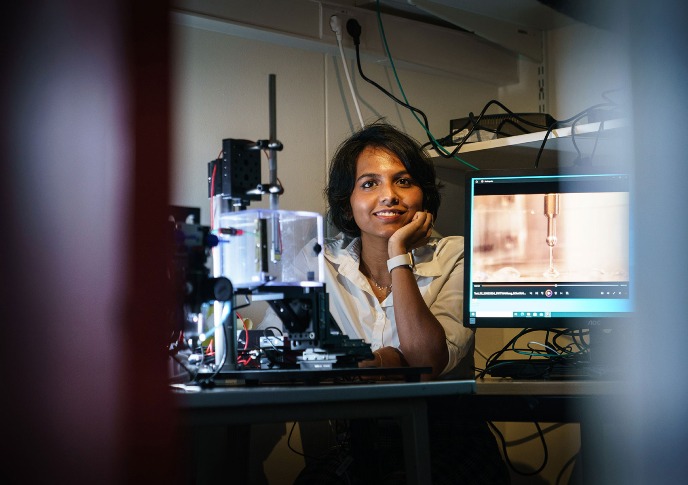
Measuring stickiness
Several plant species, from the tomato to the carnivorous sundew, use tiny sticky droplets to attract and trap insects. These water-based droplets full of sticky molecules could form an ideal toxin-free insecticide that could be easily washed off of edible plants. PhD student Abinaya Arunachalam is trying to find the perfect recipe. But how do you measure the stickiness of different candidates? Read the rest of the article here.
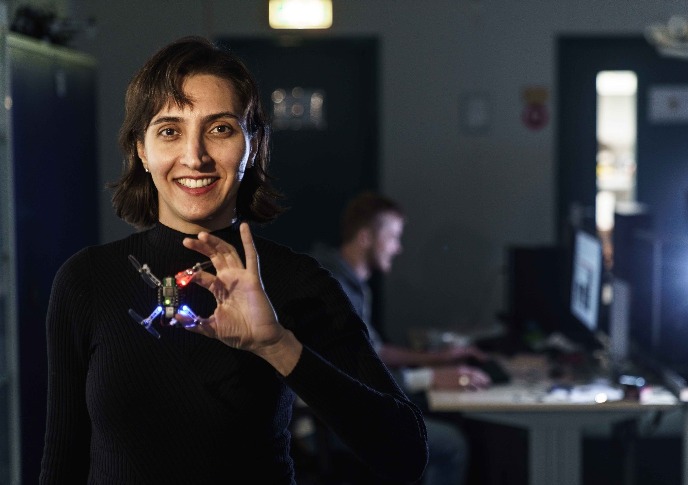
Swarming around a skyscraper
Imagine a swarm of tiny drones, like the one pictured below held by electrical engineer Bahar Haghighat. They fly around a skyscraper or a bridge, or any other hard-to-reach area. ‘Such drones can be used to spot defects on surfaces,’ Haghighat explains. ‘They can alert a human to carry out a repair, or for further inspection.’ Read the rest of the article here.
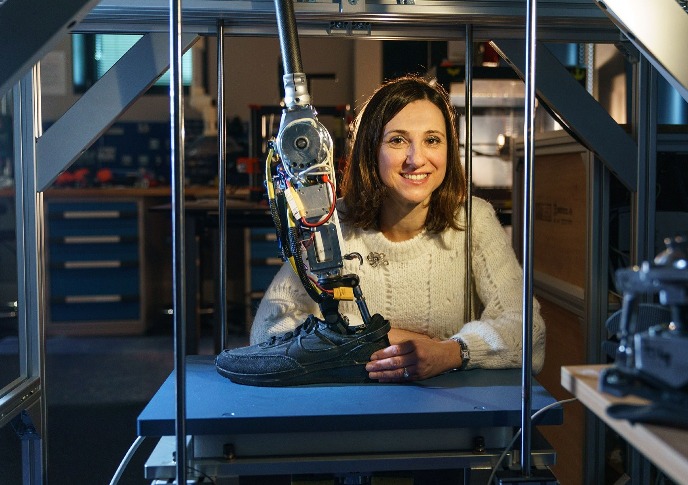
Human-centred robotics
Imagine a bionic leg that not only helps to walk again but also makes it possible to do so without constantly thinking about it. That would make life a little easier for those who need it’, says Professor of Robotics Raffaella Carloni. Read the rest of the article here.
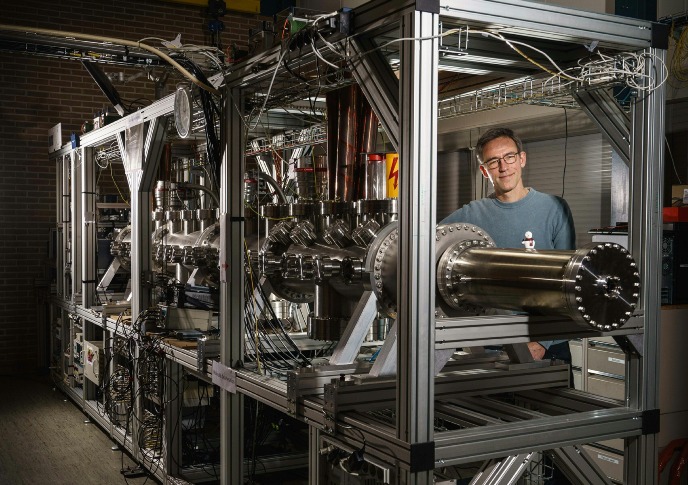
Trapping molecules
In his laboratory, physicist Steven Hoekstra is building an experimental set-up made of two parts: one that produces barium fluoride molecules, and a second part that traps the molecules and brings them to an almost complete standstill so they can be investigated. ‘In the large CERN accelerator, physicists study particles by making them smash into each other at high velocity. I want to slow the molecules down in order to make very accurate measurements', Hoekstra explains. Read the rest of the article here.
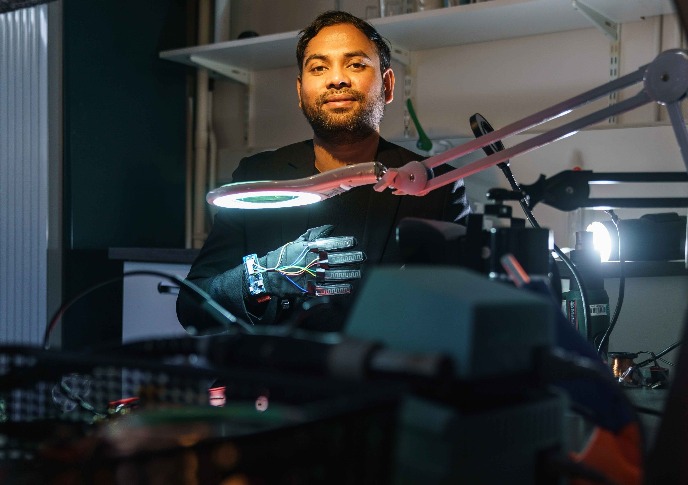
Tactile sensors
What if a prosthetic hand or limb could actually feel? At the Engineering and Technology Institute Groningen (ENTEG), Ajay Kottapalli develops bio-inspired sensors that could make this a reality. ‘We create them as wearable electronics.’ Right now, the main application of this technology lies in the use of smart insoles for Parkinson patients, who easily fall over. The insoles can detect dangerous movements and warn them in real time. Read the rest of the article here.

Night vision with artificial atoms
Through the magnifying glass, we see a thin plate covered with quantum dots: semiconducting particles with very special properties owing to their tiny size. Professor Maria Loi uses them to ‘see’ in the dark since they can be used to make digital infrared cameras. Read the rest of the article here.

Flying on wood dust
Inside the pyramid is a tube of sustainable aviation fuel made from lignin (wood dust). That’s a residual product from the paper industry that is usually burnt on site. ‘Burning is actually the last thing you want to do in the life cycle of a material,’ explains Professor of Chemical Engineering Erik Heeres. ‘We want to increase the value to that lignin, in this case by turning it into a biofuel.’. Read the rest of the article here.

Cyclone helps patients
At least 600,000 patients currently use an inhaler invented by the team around Erik Frijlink, Professor of Pharmaceutical Technology and Biopharmacy at the UG. ‘And that number is headed towards one million. It’s great when you are able to develop a product that can help patients’, Frijlink says. His team works on new ways to administer drugs, bringing together engineering and pharmacy, physics, medicine, and more. Read the rest of the article here.

A plant-based sensor
PhD student Qi Chen presents a sensor the size of an SD card that can detect movement without a battery. ‘This sensor uses green energy’, Chen says. ‘It harvests movement and converts it into an electric signal.’ To build this, Chen employed the natural properties of the soft rush plant, a persistent weed that mostly grows in wet areas. Read the rest of the article here.
| Last modified: | 31 March 2025 09.27 a.m. |
More news
-
24 March 2025
UG 28th in World's Most International Universities 2025 rankings
The University of Groningen has been ranked 28th in the World's Most International Universities 2025 by Times Higher Education. With this, the UG leaves behind institutions such as MIT and Harvard. The 28th place marks an increase of five places: in...
-
05 March 2025
Women in Science
The UG celebrates International Women’s Day with a special photo series: Women in Science.
-
16 December 2024
Jouke de Vries: ‘The University will have to be flexible’
2024 was a festive year for the University of Groningen. In this podcast, Jouke de Vries, the chair of the Executive Board, looks back.
